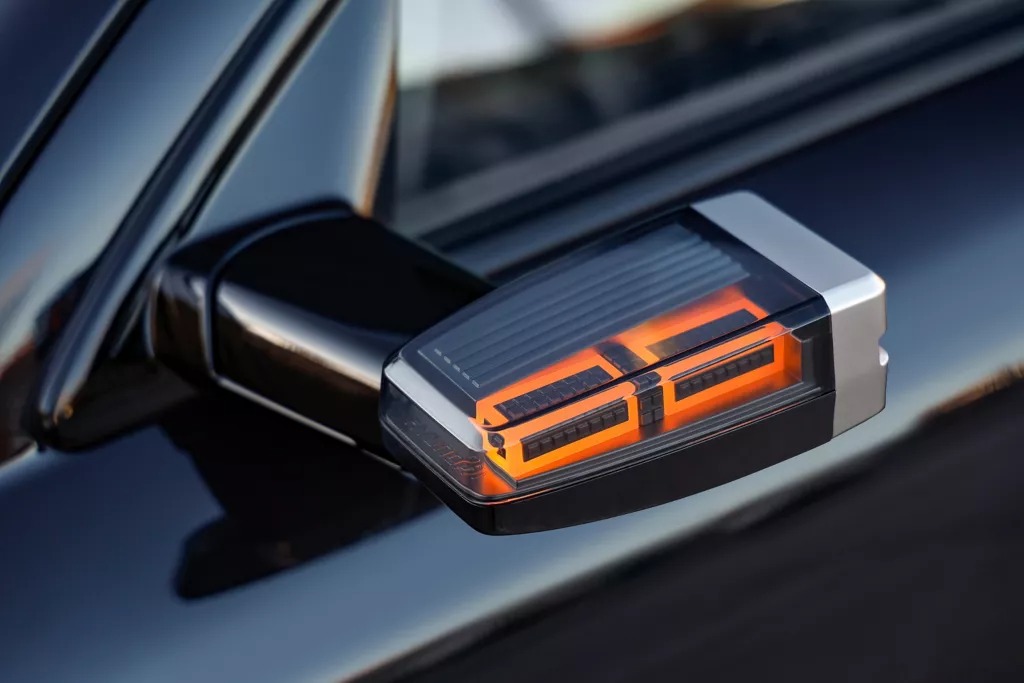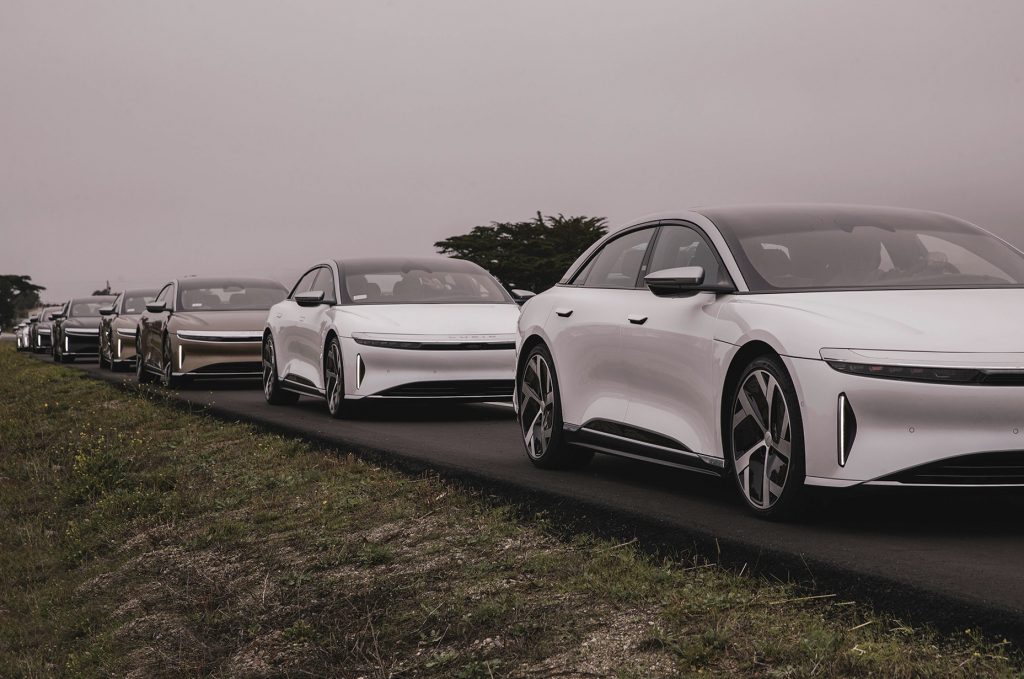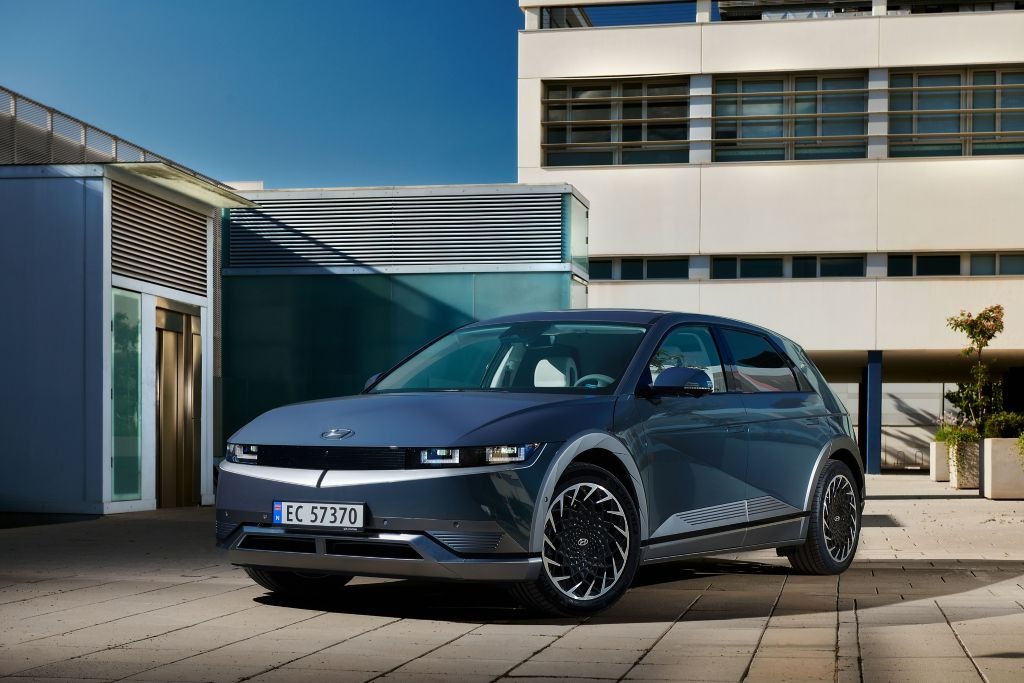What is an Electric Car Lease?
An electric car lease, also referred to as EV lease, is essentially a long-term rental agreement. You as the leaser get to drive a brand-new electric vehicle for a specified time frame, typically between two to four years. For example, you can lease a top-spec Tesla from Tesla’s leasing company. So, how do you lease an electric car? Keep reading below to find out!
You’ll initially pay an upfront amount followed by fixed monthly payments for the contract’s duration. Imagine paying your Netflix subscription with a sometimes large upfront cost.

Image Courtesy of Kia Motors
At the end of the lease, like binge-watching a show, you simply return the car. It’s super easy… unless there are repairs to make. So super easy return and you can get the latest and greatest vehicles? What’s not to like? Well, many times it’s not the most cost-effective way to drive an EV but if you are focused on leasing, let’s get to it.
Benefits of Leasing an Electric Car
1. Low Monthly Payments
In some cases, leasing a car allows you to have low monthly payments. If the monthly payments are low, then you are likely covering the cost of depreciation on the car during your lease term. In many cases, at the end of your lease term, you will have an opportunity to purchase the car. Some companies such as Tesla won’t allow you to buy out your lease at the end of your term. Make sure you know your options before signing on the dotted line.
Benefits Include:
- Significant Monthly Savings: It’s often cheaper than the monthly payments for purchasing the same car. You’re not burdened with depreciation worries, which can be uncertain with EVs.
- Flexibility: You’re able to choose your payment plans based on the monthly amount and ideal timeframe. For instance, a 36-month lease at $249 per month could require $5,000 upfront. Some dealerships or automakers will have limited amounts of lease options.
- Some Repair Costs Covered: By leasing i.e. renting, you’re not stuck with routine repair costs as most rental agreements cover routine maintenance and repairs.
- Hassle-free End Terms: At the lease’s end, you’re free to return the car with no further obligations, perfect if you fancy a change.
2. Ability to Try New Models
Choosing to lease an EV has a great perk – the chance to try new models often. It lets you drive different cars each time your lease ends. When looking at different makes and models to lease, be sure to pay attention to the mileage limits and lease length. Depending on what you’re needing out of your vehicle, these may limit your leasing options. Another important aspect of leasing is your credit eligibility, which is a standard for leasing.
Leasing gives flexibility with models, often making premium EVs within reach. Enjoy new rides and stay on top of EV tech trends through leasing!
3. Tax Credits and Rebates
Leasing an electric vehicle (EV) can bring some sweet financial perks your way. From federal tax credits to state rebates, here’s how you can cash in on your eco-friendly decision.
- Federal Tax Credit: If you’re leasing an EV, you could enjoy a federal tax credit of up to $7,500. The leasing company, which holds the title, can claim this and often passes it on to you as lease cash, bringing down your monthly payments.
- EV Lease Bonus: Brands like Hyundai offer lease specials like the “Valued Owner Bonus,” including the federal tax credit in their lease deal, potentially reducing your down payment or monthly installments. A current example is the Ionic 5 taking $10,000 off the MSRP by combining the federal tax credit and a Valued Owner Bonus.
- State and Local Savings: Depending on where you live, state and local savings could apply to your leased EV. Some states like California offer significant rebates for leasing or buying an eligible EV.
- Rebates from Electric Companies: Some leased EVs are also eligible for rebates from electric companies. Always check with your provider to see if they offer such a benefit.
- CVRP Rebate: California’s Clean Vehicle Rebate Project offers a $2,000 incentive after purchasing or leasing an eligible vehicle. Most EVs and plug-in hybrids qualify, although high-end models like Teslas might not.

Image Courtesy of Hyundai
4. Ability to Take Advantage of Manufacturers’ Incentives
Manufacturers’ incentives are discounts or deals offered by car makers to encourage leasing their electric vehicles. This is a win for you, as it brings down the cost of your lease significantly. Some of the top incentives to look out for include:
- Dealer Lease Offers: These vary widely depending on where you live, but they can make a significant impact on your monthly payments and total lease cost.
- Federal Tax Credits: Some electric vehicles, like the Chevrolet Bolt, are eligible for up to a $7,500 tax credit.
- Zero-Interest Promotions: These deals can lower the cost of leasing over time. These are harder to come by these days but they can still be found from time to time. reduced interest rates are still widely available.
- Cash Towards Down Payment: Some manufacturers offer this to reduce your out-of-pocket costs during lease inception.
- Manufacturer Markdowns: These discounts lower the selling price of the vehicle, reducing your monthly lease cost.
5. Upgrade Ability
When you lease an electric car, easily upgrading to a newer model is one of the significant advantages. You’re not tied to a long-term commitment, making it quick and straightforward to switch to a vehicle with the latest technology. When new models with advanced features are released, you just need to adjust your lease agreement to get them. You also won’t have to deal with the hassle of selling your older vehicle; the leasing company handles it. Remember, leasing is like always having the latest smartphone; you get to enjoy new advancements as they come.
6. Longer Battery Range
No more range anxiety! Leasing an electric vehicle (EV) with a long battery range allows you to travel the furthest. Think of it this way, if you lease you will have a brand new car, with a brand new battery (no degradation yet) and lower monthly payments so you could splurge for the biggest battery available. This extended range means less frequent charging stops, offering you more flexibility and convenience. Also, with a lower monthly payment you might be able to stretch your budget to get a bigger battery, if that’s an option.

Image Courtesy of Lucid Group
For example, an EV with a long range is the Lucid Air. On a full charge, you could drive from Boston to New York on a single charge with juice to spare! This not only aids your journey planning but also adds to the overall enjoyment and ease of driving an electric car. Truly, it’s a key reason to consider when leasing your next EV.
How to Lease an Electric Car?
Step 1: Research available electric car leasing deals
Start by researching available leasing deals for electric cars and plug-in hybrids. You can view manufacturers’ websites to view current deals or visit dealerships. Remember that monthly costs, upfront payments, and lease durations can vary between makes and models. Your local dealerships may also have leasing deals going on.
An important component of leasing a vehicle is to validate you meet the eligibility criteria needed for any deal you’re interested in. Always verify a lease offer from the dealer’s site prior to discussing with competitors for a probable price match. Also ensure to ask about the U.S. government tax credit of up to $7,500 for electric car purchases, and how each dealership applies it in leasing.
Step 2: Choose the right leasing plan for your needs
Choosing the right leasing plan for an electric car (EV) can significantly enhance your driving experience, and it’s easier than you think. Once you’ve identified the EV you’d like to lease, you’ll need to customize the lease agreement based on how much you drive in a year and the lease period. You’ll also want to look for leases with high residual values. which in turn provides lower payments. Lower fees are also ideal to bring down the total investment you’ll be putting into the EV.
During the purchasing process, you can avoid the paperwork hustle by ordering online. That way, when you show up to the dealership you’ll have less work to do.
Step 3: Calculate the cost of ownership over time
Begin by reviewing your lease agreement. This will include your monthly payment and the total duration of your lease, typically 36 months for electric cars. For instance, if you were leasing a 2023 Volvo C40 Recharge, you’d pay $709 per month for 36 months, with an upfront payment of $5,999.
Multiply your monthly payment by the number of months in your lease to get the total cost of your lease payments over time. Then add your upfront payment or down payment to the total cost of lease payments. This is usually paid at the commencement of your lease and can range from a few thousand to nearly $10,000 on average.
Keep in mind, the monthly payments of leasing can be significantly lower than buying the car outright, as you are only paying for the depreciation that occurs during your lease term. Don’t forget, there is no equity built up with your payments and you don’t get to keep the car are the end of the lease.
Step 4: Read reviews and ratings of different models available
Begin by visiting our EV Matchmaker for comprehensive vehicle information and listings. It’s always helpful to look at used vehicles to buy as well even if you can’t lease them. Focus your search on electric vehicles you’re interested in, like the 2023 Chevrolet Bolt EUV or 2023 Hyundai IONIQ 5 when comparing. Trying to compare lease rates on significantly different vehicles can be tough.

Image Courtesy of Hyundai
Step 5: Check if any requirements need to be met after the lease has ended
Understand that terminating a lease early might cost you the total remaining monthly payments. Avoid this if possible by reading through the lease agreement and knowing how much you need to pay. At the lease end, remember you have no equity in the car. Either prepare to lease again or be ready to pay a nominal disposition fee.
Keep an eye on your mileage. Leased EVs typically have a limit between 10,000 and 12,000 miles per year. If you overstep and you’ll face penalties. Even though you don’t own the vehicle outright, you should maintain the vehicle well. Any excess wear and tear could result in charges applying.
6. Electric Car Lease: Resale Value
At the end of your lease, you can consider a ‘buyout’ option. If resale values are high, purchasing the car for the buyout value might make more sense than starting a new lease. If the buyout amount is higher than the market price for similar cars, it’s smart to walk away.
Lease vs. Purchase
1. Electric Car Lease vs. Purchase: Mileage
Mileage is a critical element to take into account when leasing or buying an electric car. It’s key because it can drastically influence overall costs and flexibility. Essentially, leasing a vehicle limits you to driving the car less than certain amount of miles in a year. If that concerns you, buying a vehicle might be the better option.
When leasing, and you are under the allotted mileage under the lease terms you can have maintenance done at no or minimal cost. However, you do not receive credit for any unused miles. With purchasing a vehicle, you do need to cover maintenance costs with the exception of warranty-related repairs. You will also have higher monthly payments than leasing a vehicle. Those higher-cost payments, however, do mean you own the vehicle.
2. Electric Car Lease vs. Purchase: Lease Deals
Lease deals are an excellent alternative to buying an electric car, considering the high sticker prices of EVs. These deals offer a low-cost way to drive the latest models without a long-term commitment.
3. Electric Car Lease vs. Purchase vs Subscription
Considering leasing or buying an electric vehicle (EV)? Here’s a twist to consider: EV subscriptions. Brands like Porsche are offering you the ability to rent a car in their own fleet. This allows you to use the car for your own specified time which includes insurance costs. While upfront costs may be higher than leasing a vehicle on a monthly basis, this option is geared toward short-term use cases.

Image Courtesy of Porsche
The subscription-based models are typically all-inclusive. Insurance, maintenance, and roadside assistance are typically included in the rental costs. For EVs, there may be included charging discounts or at-home charging services.
Concluding Thoughts on Leasing
For consumers keen on joining the electric vehicle revolution, the present-day market offers a diverse array of options and incentives. Navigating EV leasing, you will find yourself in an advantageous position, provided you arm yourself with the right information. We hope this article serves as a guide along your journey, providing the most beneficial deals and highlighting the incentives that can maximize your savings. Regardless if you a buying a Tesla directly from them or a Kia EV6 from your local dealer, we hope you get the best deal possible as you enjoy the EV life.
Feature Image Courtesy of Kia Motors
More on EV Universe:
- Explore More EVs: Check out our comprehensive listings page for detailed information on top electric vehicles.
- Shop EV Parts: We’re more than just a source of information. Browse our extensive marketplace for a variety of EV parts and products.
- Insights & Updates: Stay updated in the world of electric vehicles with our insights section. Dive into our in-depth reviews, educational pieces, and the latest news.
- Find Your Perfect EV: Harness our EV Matchmaker tool to explore a diverse range of electric vehicles, filter by your preferences, and discover hidden gems that perfectly match your driving style and budget.



